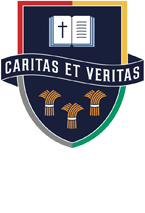Modern Foreign Languages
To learn a language is to have one more window from which to see the world.
A Chinese Proverb
Intent
The Modern Foreign Language department seeks to provide students with linguistic and cultural knowledge to see beyond their own language. We endeavour to provide students with the opportunity to enhance their communication and adaptability skills, expand cultural awareness and increase their cultural capital. We promote a passion for language learning and the wider benefits of speaking another language, such as increased employability and greater flexibility to travel and work abroad.
Through various teaching methods, we provide students with the knowledge to understand spoken and written Spanish and to produce their own written and verbal responses. Through such knowledge students are given the opportunity to improve their cognitive abilities including memory and problem-solving skills, critical thinking and creativity.
Design Rationale
The curriculum draws its core structure from the areas of phonics, vocabulary, grammar and culture, which are taught via the skills of Listening, Speaking, Reading, Writing, Translation and Dictation to allow students to become competent linguists. Key Stage 3 is designed to provide students with the relevant underpinning of language learning (phonics, vocabulary and grammar) which is then widened at Key Stage 4.
At both Key Stages, the design aims to expose students to a wide range of vocabulary from various topics and universal language that applies to all contexts. In terms of grammar, at Key Stage 3, students are introduced to grammatical structures in all three tenses and gender agreements. These concepts are regularly revisited in each topic to allow for greater proficiency in grammatical understanding and application in Key Stage 4.
Students in both Key Stages will also be exposed to the important aspects of Hispanic culture to raise their awareness of lives and traditions of Hispanic people.
Delivery
The Modern Foreign Language curriculum is delivered in a logical sequence to allow for progression and retrieval. Lessons adopt a consistent approach to ensure that content is delivered via a range of teaching and learning methods. Lessons commence with a retrieval task to consolidate prior learning, improve recall and embed key vocabulary and grammatical structures for language acquisition.
Students are made aware of Lesson Objectives and Outcomes before the teacher uses target language to introduce new language content. Clear and reliable pronunciation and the links between sounds and spellings are integral parts of our lessons. New language is presented in chunks and is regularly revisited. Modelling of language and scaffolding allows for greater student understanding and independent language production. Students complete tasks in the skills of Listening, Speaking, Reading, Writing, Translation and Dictation during one lesson or over a series of lessons. Feedback is given consistently, and misconceptions are used as a learning tool, as language acquisition involves making mistakes and showing resilience and perseverance to overcome them.
Impact
The effectiveness of curriculum implementation is measured by student progress; progress means knowing, remembering and producing more and is the direct result of excellent learning.
To track progress, we follow a three-layered assessment structure.
High Stake Testing
High quality summative assessments (twice or three times a year) interleave knowledge and skills to support students in developing long-term memory. Stand-alone lessons ensure that students reflect and respond to teacher feedback.
Mid Stake Testing
Typically, purposeful practice tasks are completed independently in lessons at least twice per half-term. These tasks are used to identify learning gaps prior to high stake testing. Students receive personalised written feedback to which they respond in lessons.
Low Stake Testing
To embed knowledge in long-term memory, every lesson starts with students quizzed on prior knowledge (Do Now Tasks). Student performance is then used effectively by teachers to identify misconceptions and plan accordingly to narrow knowledge gaps.
Knowledge Organisers
-
Year 7 Spanish Knowledge Organiser
download_for_offline
download_for_offlineYear 7 Spanish Knowledge Organiser
- Year 8 Spanish Knowledge Organiser download_for_offline
download_for_offlineYear 8 Spanish Knowledge Organiser
- Year 9 Spanish Knowledge Organiser download_for_offline
download_for_offlineYear 9 Spanish Knowledge Organiser
- Year 10 Spanish Knowledge Organiser download_for_offline
download_for_offlineYear 10 Spanish Knowledge Organiser
- Year 11 Spanish Knowledge Organiser download_for_offline
download_for_offlineYear 11 Spanish Knowledge Organiser
- Year 10 French Knowledge Organiser download_for_offline
download_for_offlineYear 10 French Knowledge Organiser
- Year 11 French Knowledge Organiser download_for_offline
download_for_offlineYear 11 French Knowledge Organiser
Long Term Plans
-
Year 7 Spanish Long Term Plan
download_for_offline
download_for_offlineYear 7 Spanish Long Term Plan
- Year 8 Spanish Long Term Plan download_for_offline
download_for_offlineYear 8 Spanish Long Term Plan
- Year 9 Spanish Long Term Plan download_for_offline
download_for_offlineYear 9 Spanish Long Term Plan
GCSE Spanish 2024-2026
-
Year 10 Spanish Long Term Plan
download_for_offline
↑
download_for_offlineYear 10 Spanish Long Term Plan
- Year 11 Spanish Long Term Plan download_for_offline
download_for_offlineYear 11 Spanish Long Term Plan
GCSE French and GCSE Spanish 2024-2025
-
Year 11 French Long Term Plan
download_for_offline
download_for_offlineYear 11 French Long Term Plan
- Year 11 Spanish Long Term Plan download_for_offline
download_for_offlineYear 11 Spanish Long Term Plan
- Year 11 Spanish Long Term Plan download_for_offline
- Year 11 Spanish Long Term Plan download_for_offline
- Year 8 Spanish Long Term Plan download_for_offline
- Year 8 Spanish Knowledge Organiser download_for_offline

